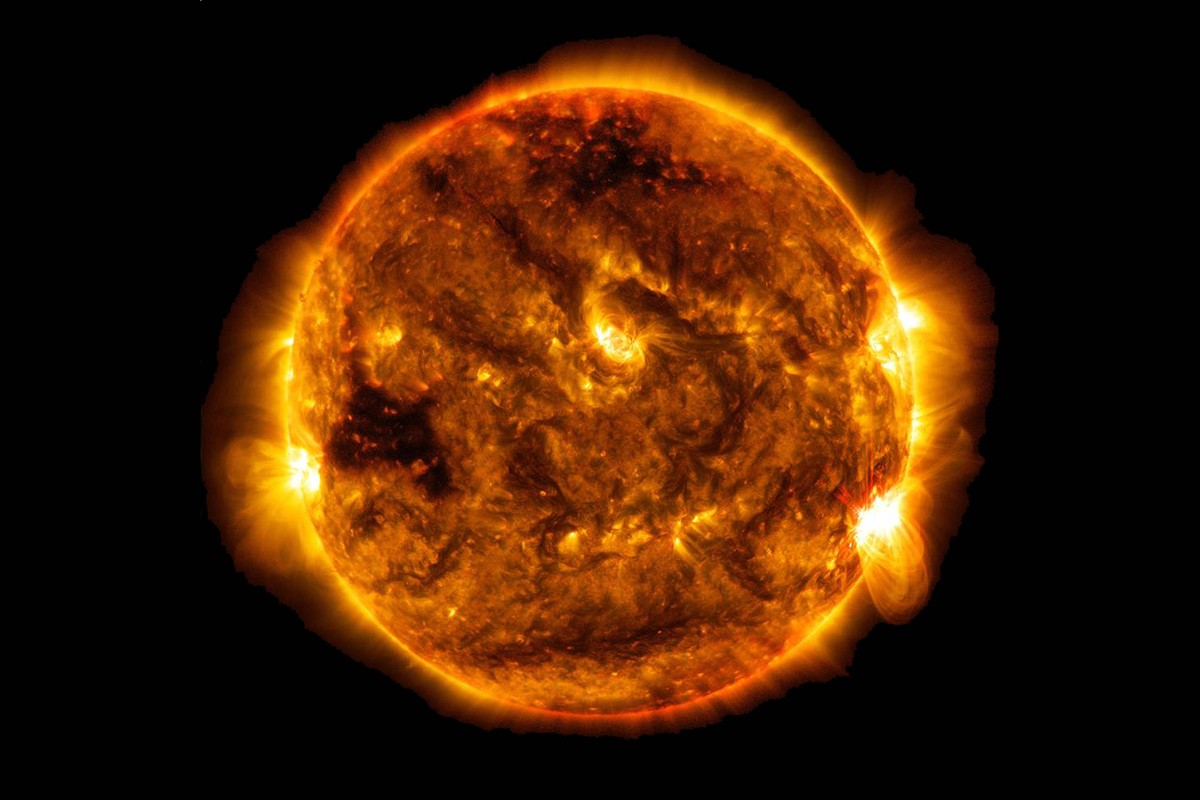While our Sun is considered an average-sized star in the grand scheme of the universe, within our own solar system, it reigns supreme as the largest celestial body. In fact, the Sun’s mass is so immense that it accounts for a staggering 99.8% of the entire solar system’s mass. This leaves a mere 0.2% for all the planets, asteroids, comets, and everything else combined. When considering just How Big Is The Earth Compared To The Sun, the difference is truly mind-blowing and can be understood through various measurements like mass, volume, and diameter.
To truly grasp the scale of this difference, let’s delve into a detailed comparison.
First, consider mass. The Sun’s mass is approximately 1,988,500 x 10^24 kg, a number almost incomprehensible in its magnitude. In contrast, Earth’s mass is around 5.9724 x 10^24 kg. When we put these figures into perspective, it reveals that the Sun’s mass is about 333,000 times greater than Earth’s mass. Imagine needing 333,000 Earths just to equal the mass of our Sun!
 Detailed image of the Sun's surface captured by NASA's Solar Dynamics Observatory, illustrating the immense scale when considering how big is the Earth compared to the Sun.
Detailed image of the Sun's surface captured by NASA's Solar Dynamics Observatory, illustrating the immense scale when considering how big is the Earth compared to the Sun.
Next, let’s explore volume. The Sun occupies a volume of 1,412,000 x 10^12 km^3, whereas Earth’s volume is a much smaller 1.083 x 10^12 km^3. This means that approximately 1.3 million Earths could fit inside the Sun if we were to imagine them as perfectly squishy spheres packed together without any gaps. This volumetric comparison vividly illustrates the sheer vastness of the Sun compared to our home planet.
Diameter provides another easily understandable way to visualize the size difference. The Sun boasts a diameter of 1,392,000 km (or 864,000 miles). Earth’s diameter, on the other hand, is a modest 12,742 km (7,917 miles). If you were to line up Earths across the face of the Sun, you could fit approximately 109 Earths in a single line. This linear comparison further highlights the Sun’s enormous width compared to Earth.
Even surface area contributes to understanding this scale. The surface area of the Sun is a staggering 12,000 times greater than that of Earth. Imagine the Earth’s surface multiplied twelve thousand times – that’s the immense surface area of the Sun!
To put the Sun’s size into even broader context within our solar system, consider Jupiter, the largest planet. Jupiter’s mass is 318 times that of Earth, and yet, you could still fit about 1,000 Jupiters inside the Sun. On the other end of the spectrum, Mercury, the smallest planet, would need to be multiplied 21.2 million times to equal the Sun’s mass. Even dwarf planet Pluto, with a mass just 1% of Earth’s, would require over 200 million Plutos to match the Sun’s mass. Our Moon, while appearing large in our sky, is dwarfed by the Sun to an even greater extent, needing 64.3 million Moons to equal the Sun’s mass.
In conclusion, whether we consider mass, volume, diameter, or surface area, the comparison of Earth to the Sun reveals an absolutely colossal difference in size. The Sun is not just bigger than Earth; it is astronomically larger, dominating our solar system in scale and mass. Understanding just how big is the Earth compared to the Sun truly emphasizes the Sun’s pivotal role and immense presence in our cosmic neighborhood.